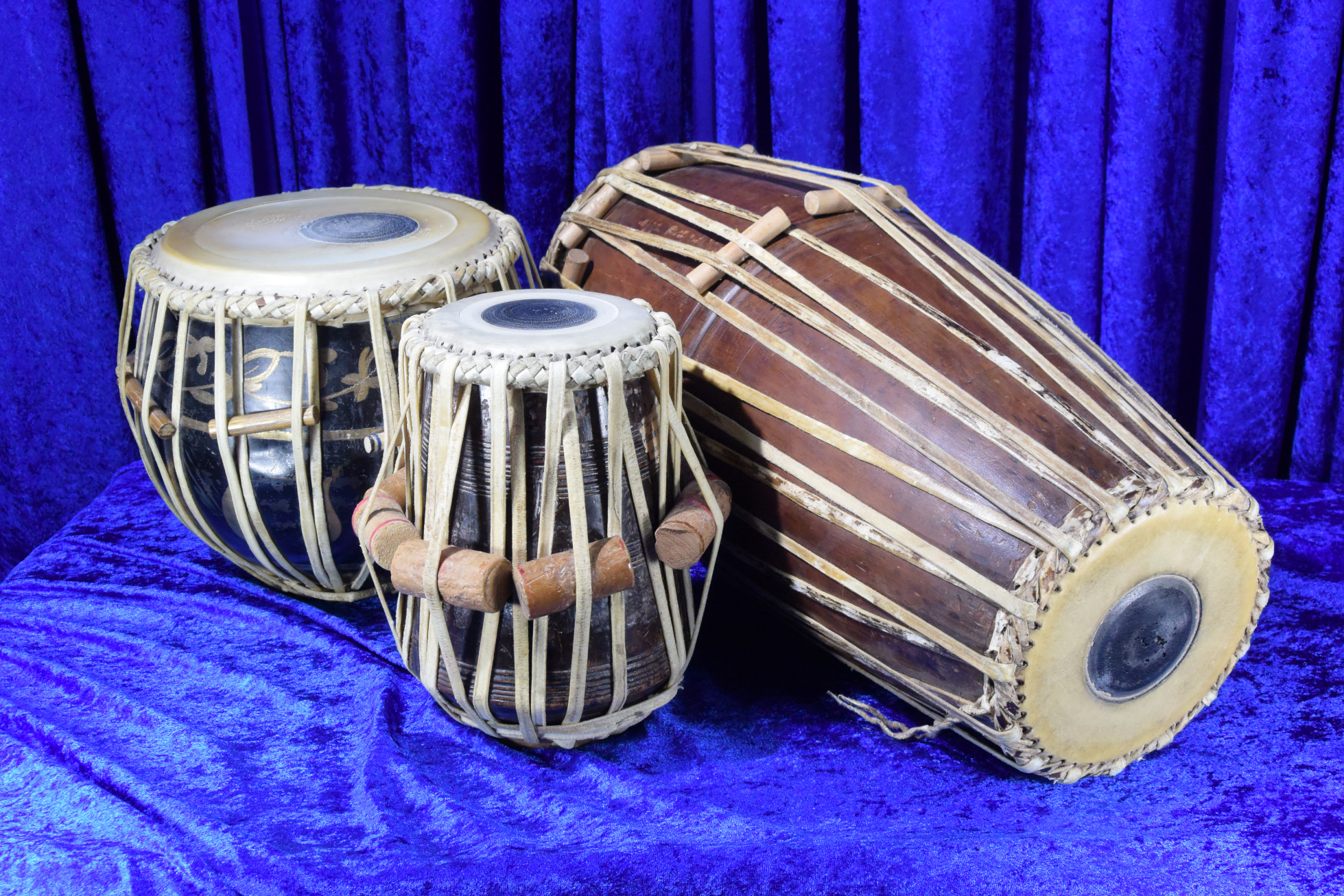
- How are Carnatic and Hindustani tals different?
- Are the responsibilities of the mridangam player the same as those of the tabla player?
- Is there an equivalence between Hindustani and Carnatic tals?
- Can you play tabla with Carnatic sangeet and Mridangam with Hindustani sangeet?
- Do Carnatic tals have thekas?
- Tal, Tala, Thalam, Talam – Which is correct?
How are Carnatic and Hindustani tals different?
Carnatic and Hindustani tals are fundamentally different. They differ in their approach to the clapping and waving as well as their approach to the “theka”.
The Carnatic system adheres to an ancient approach to the tal. In this approach, the tal is defined by the clapping and waving of the hands. Therefore, it is extremely rare to find two tals with the same vibhag / tali / khali structure. Consequently, it is also the norm to have totally different “grooves” used within each thalam.
Conversely, the Hindustani system defines the tal by the theka. The theka is a basic “grove” or pattern of bols. It is very common in Hindustani sangeet to have the different tals share the same pattern of clapping and waving. For instance, punjabi theka, tintal, and tilwada tals all have an identical vibhag / tali / khali structure.
Are the responsibilities of the mridangam player the same as those of the tabla player?
No, there are major differences between the duties of the mridangam player and the tabla player. The tabla player’s primary duty is that of timekeeper. It is the tabla a player’s job to keep the whole performance together.
The mridangam player is generally not the timekeeper. In a typical performance, the main musician, as well as half the first row of the audience, will be there to keep the tal. This frees the mridangam player to explore elaborations that a tabla player is generally not free to do.
Is there an equivalence between Hindustani and Carnatic tals?
The fundamental differences between the Hindustani and Carnatic tals make an exact correlation between the two systems impossible. However the following table is a rough approximation.
| Carnatic and Hindustani Tals | |
| Carnatic | Hindustani |
| Chatusra Jati Ata | Chautal, Ektal |
| Adi tal | Tintal, Tilwada, Kaherava, Dhummali |
| Mishra Chapu | Tivra, Rupak, Pashtu, Dipchandi |
| Khanda Chapu | Sultal, Jhaptal |
| Rupakam | Dadra, Khempta |
Can you play tabla with Carnatic sangeet and mridangam with Hindustani sangeet?
You can play the instruments in this manner, but it is generally not done. This would be somewhat like playing bassoon in Country-and-Western music or pedal steel guitar in a classical symphonic setting.
Do Carnatic tals have thekas?
No, Carnatic tals do not have a theka in the Hindustani sense of the word. However, there are a number of fairly standard accompaniment patterns that are used; but these patterns do not have the same theoretical and practical importance as the theka of the North.
Tal, Tala, Thalam, Talam – Which is correct?
They are all correct.
One reason stems from the fact that India is a land of many languages. Although these forms are all derived from the Sanskrit word “Tala”, differences in pronunciation contribute to the different spellings.
One other reason for the different spellings is the differing approaches to transliterating different Indian languages. Identical words may be transliterated differently. The relationship between “t” and “th” is a common example. For instance rathna, kantha, and lalitha in the South are transliterated as ratna, kanta, and lalita in the north.
